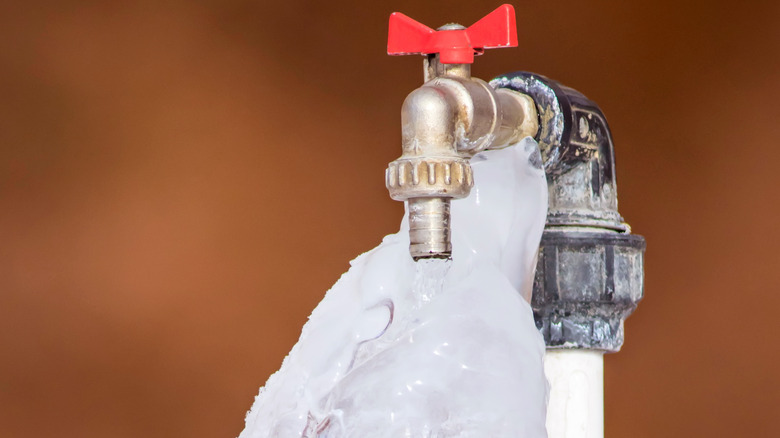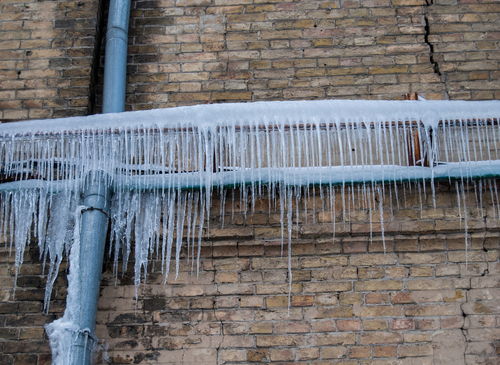Preventing Frozen Plumbing: Top Methods for Cold Weather
Preventing Frozen Plumbing: Top Methods for Cold Weather
Blog Article
The publisher is making a number of great pointers on the subject of 6 Ways to Prevent Frozen Pipes overall in this article underneath.

Cold weather can wreak havoc on your plumbing, particularly by freezing pipes. Below's just how to stop it from occurring and what to do if it does.
Introduction
As temperatures decline, the danger of frozen pipes rises, potentially resulting in costly fixings and water damages. Comprehending exactly how to avoid frozen pipelines is crucial for property owners in cold climates.
Prevention Tips
Protecting susceptible pipelines
Cover pipelines in insulation sleeves or use warm tape to safeguard them from freezing temperature levels. Concentrate on pipes in unheated or external areas of the home.
Home heating techniques
Maintain indoor spaces adequately heated up, especially areas with pipes. Open up cabinet doors to allow warm air to distribute around pipelines under sinks.
How to identify frozen pipes
Try to find lowered water circulation from taps, uncommon smells or sounds from pipelines, and noticeable frost on revealed pipelines.
Long-Term Solutions
Architectural changes
Take into consideration rerouting pipelines far from outside wall surfaces or unheated areas. Add extra insulation to attic rooms, cellars, and crawl spaces.
Upgrading insulation
Invest in premium insulation for pipes, attic rooms, and wall surfaces. Appropriate insulation helps keep constant temperatures and reduces the danger of frozen pipelines.
Safeguarding Exterior Plumbing
Garden pipes and outdoor taps
Disconnect and drain pipes garden pipes before winter months. Mount frost-proof faucets or cover exterior faucets with protected caps.
Recognizing Icy Pipelines
What triggers pipelines to ice up?
Pipes ice up when exposed to temperature levels below 32 ° F (0 ° C) for prolonged durations. As water inside the pipelines freezes, it broadens, taxing the pipeline walls and potentially triggering them to rupture.
Dangers and problems
Icy pipelines can lead to water system disturbances, home damages, and pricey repairs. Ruptured pipelines can flooding homes and trigger substantial architectural damage.
Signs of Frozen Pipes
Identifying icy pipes early can prevent them from bursting.
What to Do If Your Pipelines Freeze
Immediate activities to take
If you think icy pipelines, keep taps available to soothe pressure as the ice melts. Utilize a hairdryer or towels soaked in warm water to thaw pipes slowly.
Conclusion
Stopping frozen pipes calls for proactive procedures and fast reactions. By recognizing the causes, indications, and safety nets, homeowners can protect their plumbing during winter.
5 Ways to Prevent Frozen Pipes
Drain Outdoor Faucets and Disconnect Hoses
First, close the shut-off valve that controls the flow of water in the pipe to your outdoor faucet. Then, head outside to disconnect and drain your hose and open the outdoor faucet to allow the water to completely drain out of the line. Turn off the faucet when done. Finally, head back to the shut-off valve and drain the remaining water inside the pipe into a bucket or container. Additionally, if you have a home irrigation system, you should consider hiring an expert to clear the system of water each year.
Insulate Pipes
One of the best and most cost-effective methods for preventing frozen water pipes is to wrap your pipes with insulation. This is especially important for areas in your home that aren’t exposed to heat, such as an attic. We suggest using foam sleeves, which can typically be found at your local hardware store.
Keep Heat Running at 65
Your pipes are located inside your walls, and the temperature there is much colder than the rest of the house. To prevent your pipes from freezing, The Insurance Information Institute suggests that you keep your home heated to at least 65 degrees, even when traveling. You may want to invest in smart devices that can keep an eye on the temperature in your home while you’re away.
Leave Water Dripping
Moving water — even a small trickle — can prevent ice from forming inside your pipes. When freezing temps are imminent, start a drip of water from all faucets that serve exposed pipes. Leaving a few faucets running will also help relieve pressure inside the pipes and help prevent a rupture if the water inside freezes.
Open Cupboard Doors
Warm your kitchen and bathroom pipes by opening cupboards and vanities. You should also leave your interior doors ajar to help warm air circulate evenly throughout your home.

I have been very fascinated with How to Prevent Your Pipes From Freezing and I hope you appreciated the new page. Are you aware of somebody who is intrigued by How to Prevent Your Pipes From Freezing? Why not share it. We enjoy your readership.
This Page Report this page